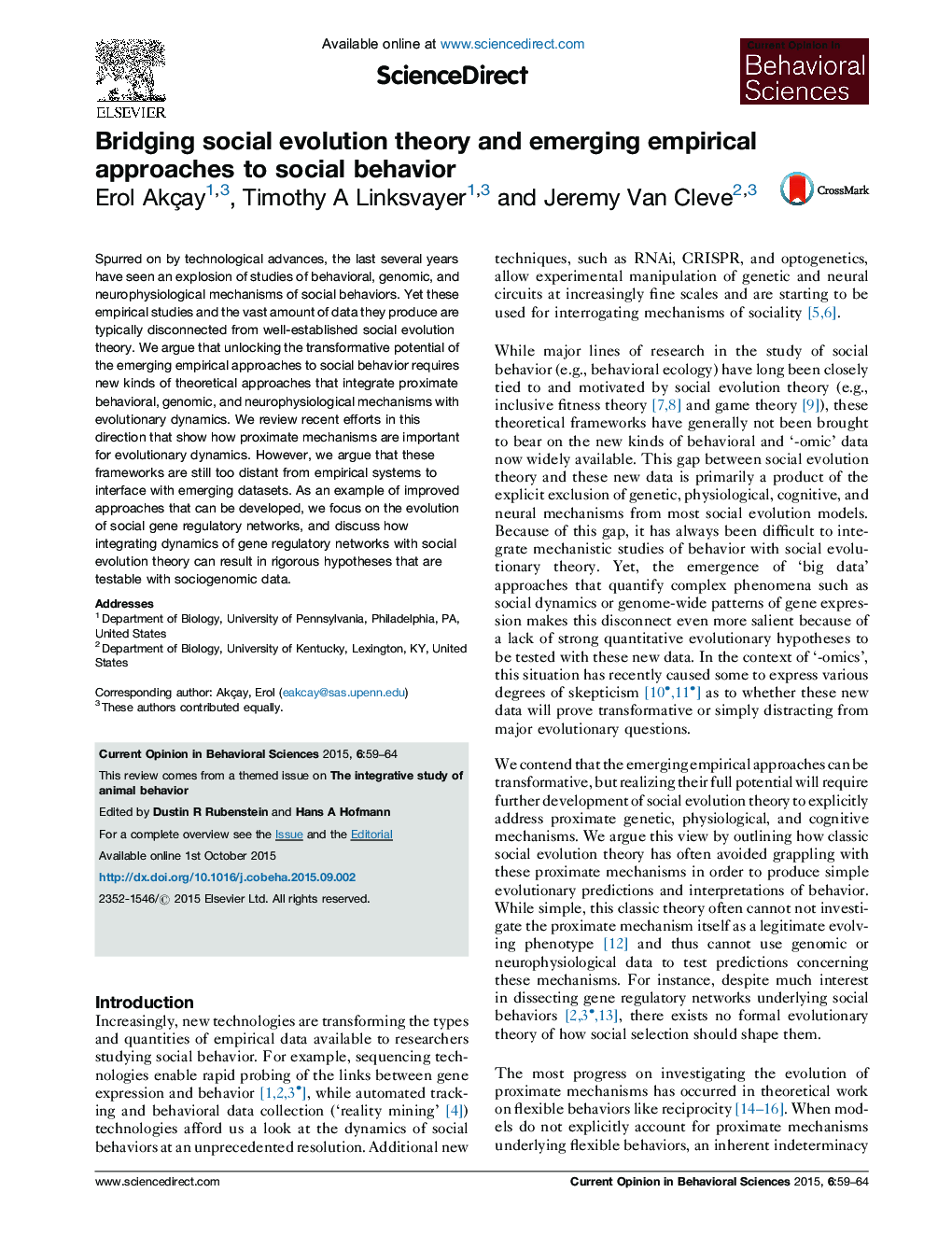| Article ID | Journal | Published Year | Pages | File Type |
|---|---|---|---|---|
| 6260737 | Current Opinion in Behavioral Sciences | 2015 | 6 Pages |
â¢New technology allows probing of proximate processes underlying social behavior.â¢Existing social evolution theory has little to say about these new kinds of data.â¢We argue for integrating proximate processes with social evolutionary theory.â¢Existing approaches to model flexible behaviors do not go far enough.â¢Evolutionary modeling of gene regulatory networks presents a promising direction.
Spurred on by technological advances, the last several years have seen an explosion of studies of behavioral, genomic, and neurophysiological mechanisms of social behaviors. Yet these empirical studies and the vast amount of data they produce are typically disconnected from well-established social evolution theory. We argue that unlocking the transformative potential of the emerging empirical approaches to social behavior requires new kinds of theoretical approaches that integrate proximate behavioral, genomic, and neurophysiological mechanisms with evolutionary dynamics. We review recent efforts in this direction that show how proximate mechanisms are important for evolutionary dynamics. However, we argue that these frameworks are still too distant from empirical systems to interface with emerging datasets. As an example of improved approaches that can be developed, we focus on the evolution of social gene regulatory networks, and discuss how integrating dynamics of gene regulatory networks with social evolution theory can result in rigorous hypotheses that are testable with sociogenomic data.
